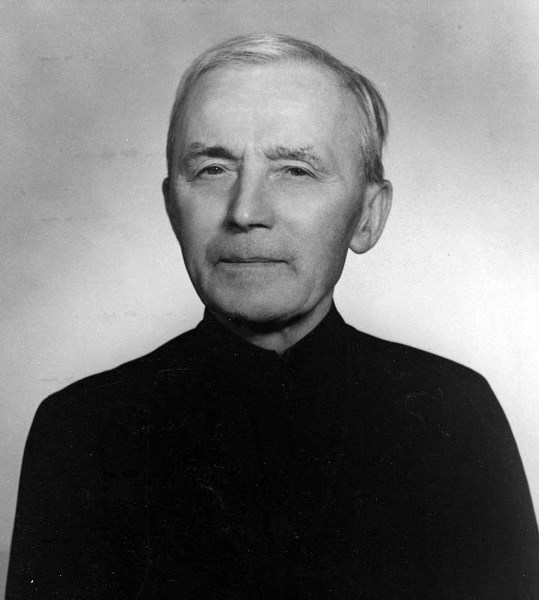A St. Albert missionary colloquially known as "Brother Ave" is on the path toward becoming Western Canada's first saint. The Vatican declared Antoine Kowalcyzk, also known as Brother Anthony, as "venerable" and acknowledged for his "heroic virtues" in an announcement late last month.
A St. Albert missionary colloquially known as "Brother Ave" is on the path toward becoming Western Canada's first saint.
The Vatican declared Antoine Kowalcyzk, also known as Brother Anthony, as "venerable" and acknowledged for his "heroic virtues" in an announcement late last month.
This recognition brings the Oblate two steps closer to sainthood, the first sanctified individual who has worked extensively in Western Canada, noted Diane Lamoureux, archivist for the Oblates of Mary Immaculate (OMI) Lacombe and National Archives Coordinator.
"A lot of people have taken interest in him, he's one of the most popular Oblates in the graveyard," she said.
Born in Poland in 1866, Kowalcyzk joined the OMI religious order after training as a blacksmith in Germany. Kowalcyzk came to Canada for mission work in 1896 and was first posted to Lac la Biche.
Brother Anthony became revered for his strength in faith after a sawmill accident left his right hand mangled. He endured a four-day journey to Edmonton and was said to have held his crucifix – no anesthesia was available – while his gangrenous arm was amputated.
His prosthetic arm made of wood, leather and metal is currently housed at the Musée Heritage Museum in St. Albert.
"He was a simple man who worked very hard despite the fact he only had one arm," said Lamoureux. Kowalcyzk continued to St. Paul where he worked as the mission's mechanic, engineer and gardener while serving the Métis and First Nations communities.
Brother Anthony carried out similar roles when he transferred to Saint-Jean Juniorate in 1911, now the University of Alberta's Campus Saint-Jean, after pronouncing his final vows in St. Albert. There he was a blacksmith, driver, laundryman, caretaker and handyman for 36 years. Kowalcyzk constructed a grotto on the campus grounds dedicated to Our Lady of Lourdes, earning him the name "Brother Ave" for his love for the Virgin Mary.
Several "little miracles" have been attributed to the holy brother including an instance where he led a herd of starving pigs through a field of oats without having them feast on a single piece of grain. Kowalcyzk's prayers have also been noted to repair broken machinery.
Brother Anthony died on July 10, 1947 and is buried with other members of the Oblate Mission on Mission Hill in St. Albert, east of the Father Lacombe Chapel. The history of St. Albert is tied to the Oblates and the founding of the mission in 1861 by Father Albert Lacombe.
Brother Anthony's cause was first introduced in the Archdiocese of Edmonton in 1952 and has been under study by the Vatican since 1979.
The next step towards sainthood is beatification. Kowalcyzk will become eligible for the "blessed" title if a miracle can be attributed to the intercession of his death. An additional posthumous miracle is required for him to be canonized as a saint.
Brother Anthony was recognized alongside seven others by the Vatican for their "heroic virtues" before Easter.
